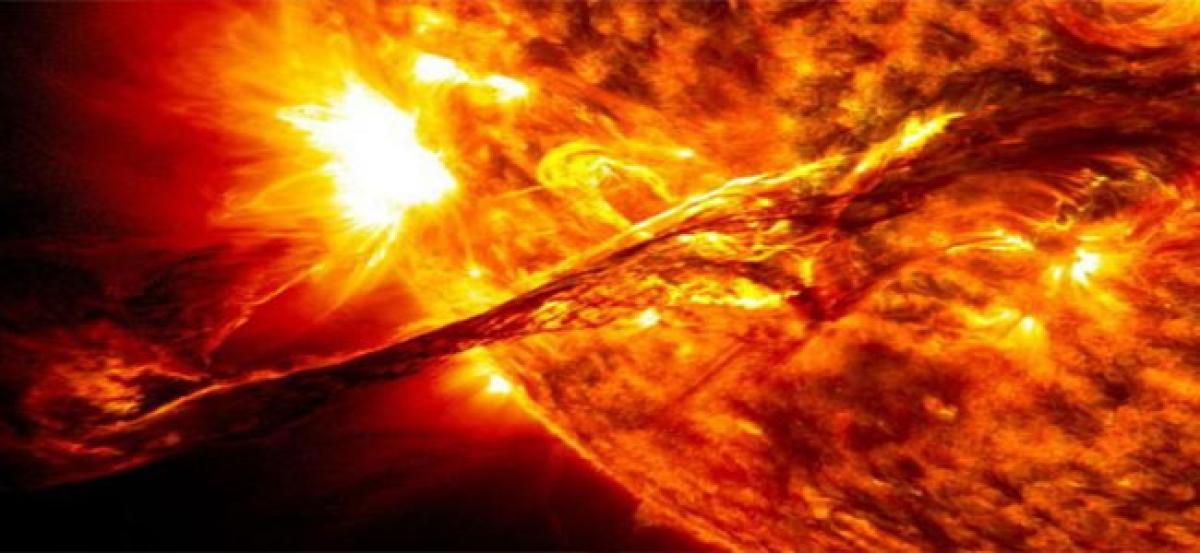Live
- Bringing joy to MPP schoolchildren
- Contaminated food worth Rs 52,000 disposed
- BJP MLA warns of protest over Panchamasali reservation demand
- Sunspots and solar flares can affect Earth’s surface
- Discom staff neglect jungle clearance at poles
- Experts at COP29 urge India to tackle short-lived climate pollutants
- AGP inducts new locomotive
- Visakhapatnam: 31-year-old attacks girl for refusing his love
- MyVoice: Views of our readers 15th November 2024
- NWKRTC embraces digital payments to enhance passenger experience
Just In

Sun-like stars and their less massive cousins calm down surprisingly quickly after a turbulent youth, making the atmosphere more suitable for evolution of life, says a new study.
Washington: Sun-like stars and their less massive cousins calm down surprisingly quickly after a turbulent youth, making the atmosphere more suitable for evolution of life, says a new study.
The researchers used data from NASA's Chandra X-ray Observatory and European Space Agency's XMM-Newton to see how the X-ray brightness of stars similar to the Sun behaves over time.
Specifically, the researchers examined 24 stars that have masses similar to the Sun or less, and ages of a billion years or older.
The findings published online in the journal Monthly Notices of the Royal Astronomical Society showed that older stars drop in activity quickly.
The rapid observed decline in X-ray brightness implies a rapid decline in energetic activity, which may provide a hospitable environment for the formation and evolution of life on any orbiting planets.
The X-ray emission from a star comes from a thin, hot, outer layer, called the corona. From studies of solar X-ray emission, astronomers have determined that the corona is heated by processes related to the interplay of turbulent motions and magnetic fields in the outer layers of a star.
High levels of magnetic activity can produce bright X-rays and ultraviolet light from stellar flares.Strong magnetic activity can also generate powerful eruptions of material from the star's surface.
Such energetic radiation and eruptions can impact planets and could damage or destroy their atmospheres.Since stellar X-rays mirror magnetic activity, X-ray observations can tell astronomers about the high-energy environment around the star.
The new findings showed that older stars drop in activity far more quickly than their younger counterparts. To understand how quickly stellar magnetic activity level changes over time, astronomers need accurate ages for many different stars.

© 2024 Hyderabad Media House Limited/The Hans India. All rights reserved. Powered by hocalwire.com







